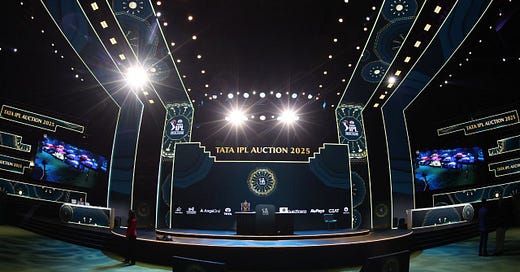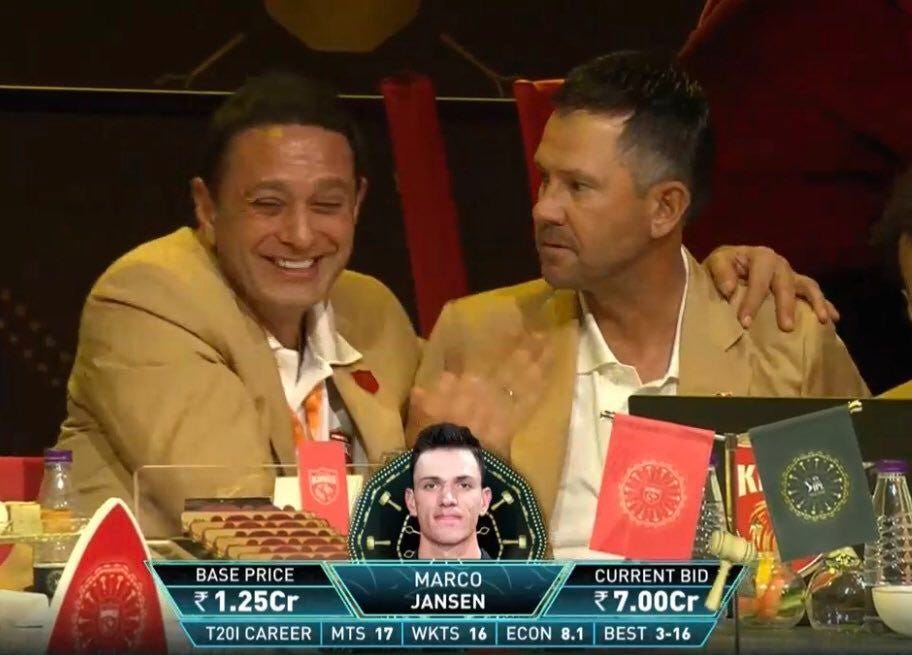Misbehaviour in IPL Auction
Understanding inexplicable decisions during the IPL Auction through the lens of behavioural economics
Watching an IPL auction is a frustrating experience, not because of the disgusting graphics akin to an arcade game, an auctioneer who clearly wasn't up to the mark, or the frothy rule changes that suddenly make a 43-year-old MS Dhoni an "uncapped" player. Those aspects just make it an unserious affair. But it is the decision-making skills (or the lack of it) on display from the team owners that makes yours truly want to pull all his hair out and throw his proverbial television out the window.
Human beings aren't rational beings. Adam Smith – The Father of Economics – included psychological reasoning in his writings despite psychology not being a recognized field of study at the time. However, the rejection of the "human element" was quite evident during the empiricism takeover of the field in the early 1900s. Homo economicus was the term used to define humans as self-centred and consistently rational who maximize utility. In simple terms, humans will always do what's best for them. Countless Nobel Prize winners built mathematical models based on these assumptions and continued to explain almost every walk of life using their narrow viewpoints.
It took decades of ridicule and pathbreaking work of geniuses like Amos Tversky and Daniel Kahneman (the author of Thinking, Fast and Slow) to give legitimacy to the field of Behavioural Economics and project it as the future of microeconomics. Too bad IPL didn't exist in the 20th century because watching PBKS blow through half their wad in the first hour of the 2024 IPL mega-auction would've certainly convinced all the famous Rational Theory economists that humans are not only not rational, they are probably masters of self-sabotage.
To be fair, expecting cricket team owners (or other decision-makers) to act with any sense of rationality is wrong when their baseball, basketball and football counterparts have made countless gobsmacking decisions despite having much more advanced analytical tools at their disposal and for longer. So what causes these millionaires (and billionaires) who are clearly very successful in their respective non-cricket professions to make these decisions which make little to no sense to anyone with a decent understanding of cricket? Well, behavioural economics might hold the answer to some of the questionable (at best) decisions that have been on display over the last few weeks in IPL.
IPL's use of an auction instead of a draft or free agency like American sports makes the event complex from a decision-making perspective but very interesting from a behavioural economics point of view. After a successful bid, most teams are bound to suffer from the winner's curse – a common phenomenon in auctions where the winner overpays because their bid exceeds the item's actual value. Now, a smart team management would engage in what is called bid shading, which involves adjusting their bids to account for the risk of overestimating the item's value (something that yours truly believes CSK often did during the auction).
For example, if Kolkata Knight Riders (KKR) thought Venkatesh Iyer was worth INR 20 crores, being (mostly) the smart team they are, they would recognize the risk of being overly optimistic (also known as the overconfidence effect). Hence, instead of bidding the full INR 20 crores, they might shade their bid downward to, say, INR 18 crores. This way, they account for the possibility that winning means their estimation was too high.
Bid shading is necessary because overpaying for a player hurts you on two fronts:
There's an opportunity cost of buying better players with the money that could've been saved.
Highly paid but non-performing players hurt team performances more because the coaches feel under pressure to play, as teams are unable to ignore sunk costs.
Instead, KKR overpaid massively for a player who was the third-best batter (and probably the fifth-best hitter) on his own team in the 2024 IPL.
Another interesting phenomenon visible during the entire mega-auction cycle (especially in the retention list and to some extent with the use of RTM) was the Endowment Effect, where people often value something more once they own it, even if they've just gotten it and aren't emotionally attached to it. For example, if you don't own a coffee mug, you might only be willing to pay $5 to buy it. But if you already own the same mug, you might only be willing to sell it if someone offers you, say, $8. This most probably explains Rajasthan Royal's decision to retain Riyan Parag and Dhruv Jurel, two mediocre (at best so far) T20 players, for nearly 25% of the total salary cap.
But nothing prompted yours truly to pump this piece out more than Punjab Kings buying Shreyas Iyer for INR 26.75 crores. A decision so infuriating, they would've been better off setting that amount on fire like Joker in The Dark Knight.
21 players have faced 1000 balls in the IPL since the start of the 2020 season. Shreyas Iyer ranks second from the bottom of those 21 players when sorted on strike rate. The player at the bottom is Devdutt Padikkal, who went for the base price of INR 2 crores, and the player just above Iyer is KL Rahul, whose services were acquired for INR 14 crores by Delhi Capitals. There is no evidence to suggest why Iyer, who is 29 years old, should cost twice as much as Rahul, who has at least previously shown more pedigree as a T20 hitter. There is no evidence unless you account for captaincy.
Cricket (along with baseball) is one of the very few team sports that doesn't require both teams to be present on the field at full strength at the same point at any point of the game. For half the game, only two players face opposition, and no one who's not on the field can influence the state of the game. Yet a "captain" seems to be an essential position only in the cricketing circles. It has been indoctrinated into the viewers' minds through phrases like "captain's knock," "captain leading from the front," "leader in the dressing room," etc.
Hence, captains have often been among the highest-paid players on their teams in IPL history. All because that's the conventional wisdom, and following the conventional wisdom makes sense. Why? Because as a coach, if you go against the norm and do well, you will get a heap of praise and a decent monetary reward. But if you fail, you could soon join the hordes of unemployable people on the streets of this country. On the other hand, if you fail while running with the pack, at least you will have a presentable excuse to your boss. It is also why Andy Flower, often regarded as a great T20 coach, probably retained Virat Kohli at 21 crores.
Richard Thaler, a 2017 Nobel Prize winner for his work in Behavioural Economics (also the author of Nudge), calls this the "Dumb Principal" problem. The team's owner (known as the Principal here) has set up the team under him not to maximize the winning chances but to minimize the chances of the team failing. The incentive system at most work set-ups reinforces this behaviour (it is also probably why you rarely take risks at your job).
An intelligent owner would incentivize the staff to maximize winning by rewarding them for decisions that maximize winning chances with the information available during decision-making (ex-ante), even if they turn out to be losing bets later (ex-post).
But why would management prefer minimizing the chances of a team failing than maximizing the chances of winning by either following the convention or valuing the same talent more when they have them than when they don't? Because humans are loss-aversive. Loss aversion is one of the core tenets of behavioural economics, and Kahneman's work on it was cited as a reason for his Nobel Prize in Economics in 2002. Research has shown that a loss of $500 hurts almost twice as much as a gain of $500, or a loss of $500 can only be compensated by the pleasure of earning $1000. You will respect Kohli's often public commitment to playing 5 bowlers even more now because that maximises the chances of winning test matches instead of playing respectable draws (when humans clearly prefer the latter).
Hence, it is not so surprising that the most successful franchise in the IPL, CSK, has had a nearly stable ownership and management group for well over a decade and a half (something which Gujarat Titans seems to be replicating well so far and getting the results too). A clear buy-in from the top, starting with the owner and the owner backing everyone who works for him for taking smart but unconventional chances (especially) when they fail, is necessary for sustained success.
It is also unsurprising that most unsuccessful teams in the league have had constant management changes. MI's recent downward performance trend has also correlated with leadership changes at the top. After all, these teams are run by humans and not Homo economicus.
Except for CSK, which is run by Mahendra Singh Dhoni.
Maybe that's why he's Thalla for a reason.







If Virat’s 21 crore is understandable, why isn’t Shreyas Iyer’s 26.75?
This is brilliant!